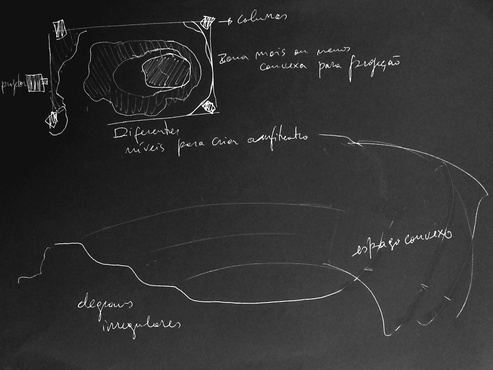The grotto is a project developed by Hugo Canoilas with Galeria Quadrado Azul. Using part of the gallery's basement floor, the grotto is a collective work and an experimental platform that seeks to create a community between a group of artists, the gallery and its audience.
This project will be developed by a heteroclite group of authors from different generations, geographical origins and artistic, social and political affiliations, configuring itself as a space where difference converges. The contributions to this work oscillate between interventions in the grotto's space that will overlap on one another, and a set of ephemeral interventions that intend to amplify the problems evoked through this project.
The walls of the cave carry a set of latent forces for those who act there. They evoke the toxic impression on the planet, which cannot be transformed into nature. At the same time, they recall the first human impressions of the inhabited space. The cave paintings resulted from a new consciousness which is beyond the rational and wich allowed to exteriorize ritualistic plastic forms that still resist to a certain understanding and domination. The first paintings show forms of empathy between animal and human and reveal a non-hierarchical relationship between humans, animals and plants, as well as with the mountains, the rain and other elements. The anachronistic movement that evokes the cave paintings' time is fertile ground to think about the most pressing aspects of the present, such as the new forms of subjectivity in the Fourth Industrial Revolution, gender parity and ecology.
The grotto is a dark place, ideal for new cosmogonies to be created. This project aims to be a fertile place for new sensitivities and practices to be inscribed in the cultural scene. With the pretension of becoming a collective work without hierarchies, a large group of authors were summoned in order to develop a piece-space through a set of good practices, creating a non-differentiation between form and content, between ideas and modus operandi.
The grotto was designed and built by Hugo Canoilas, Vasco Costa and Filipe Feijão, in dialogue with Ana Vaz who conceptually helped to transform this space as place to receive cinema and video works.



